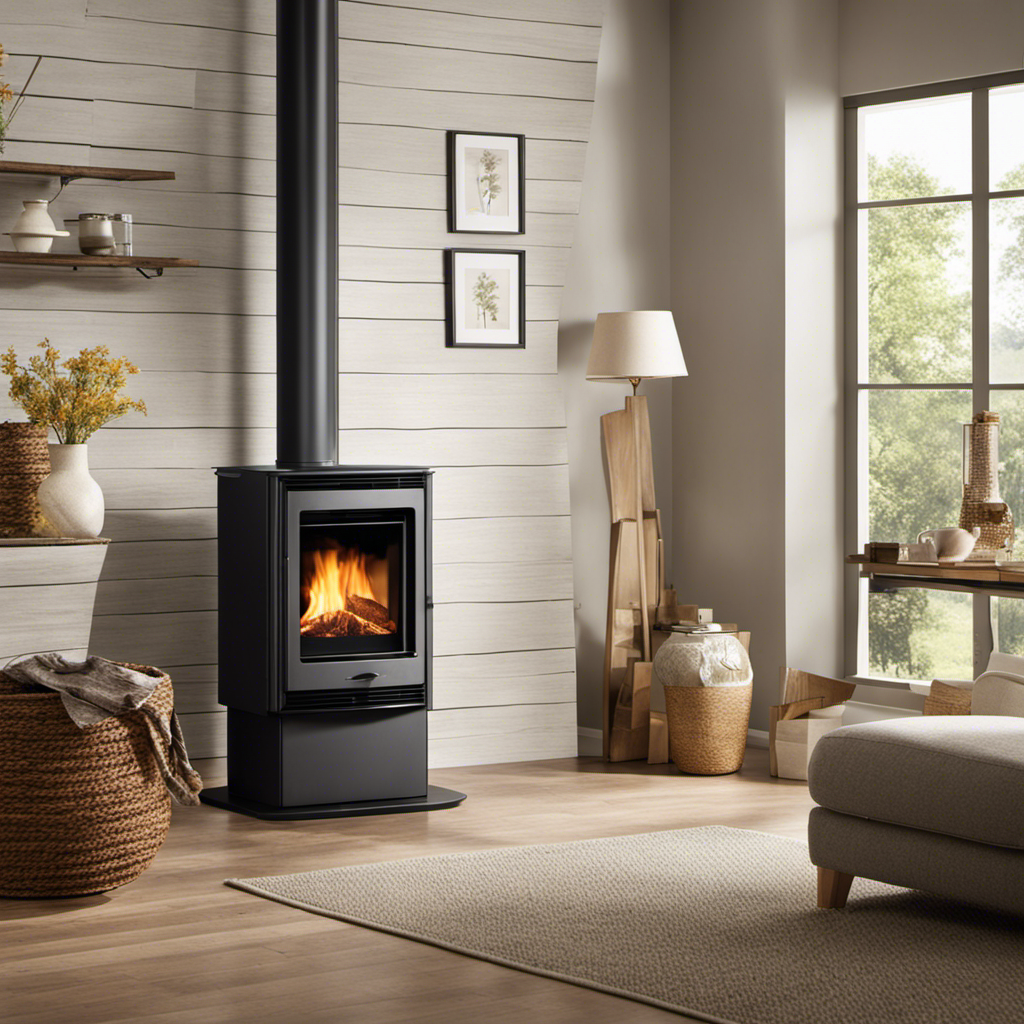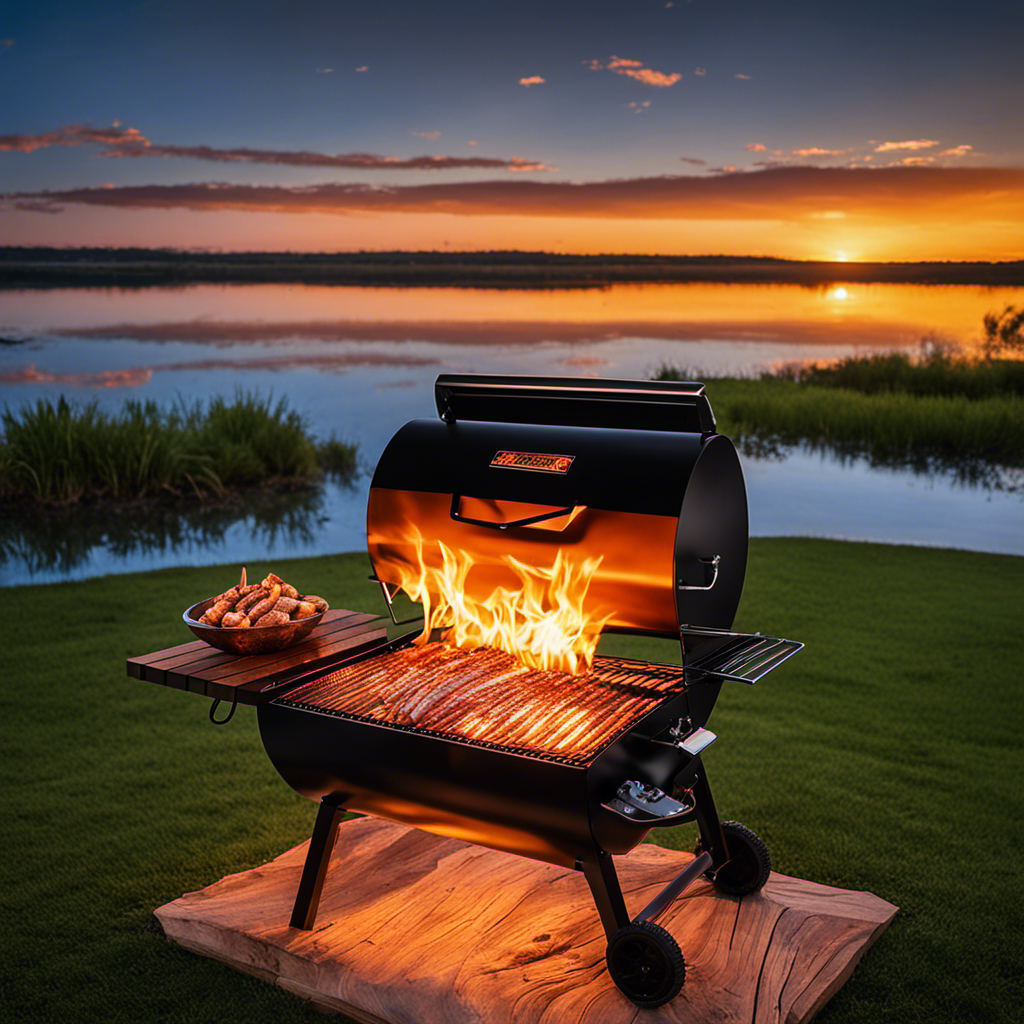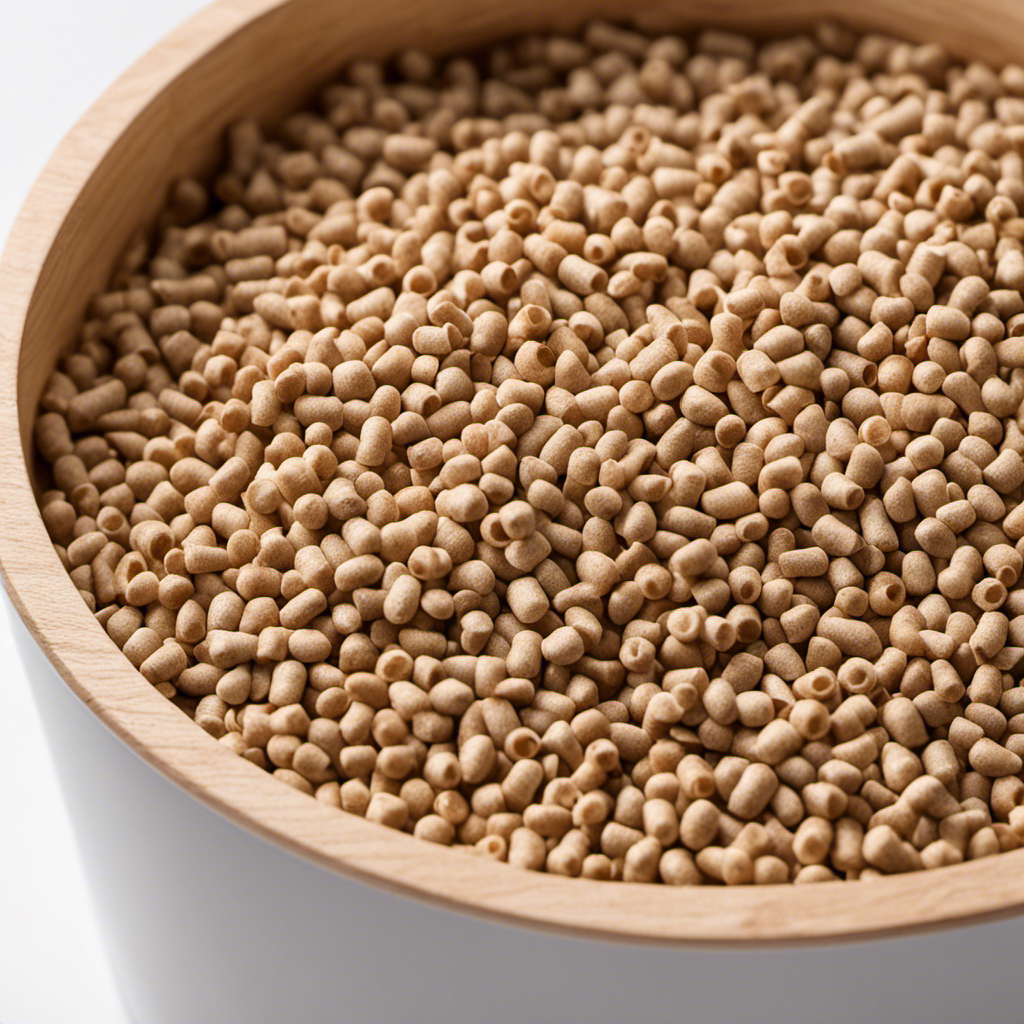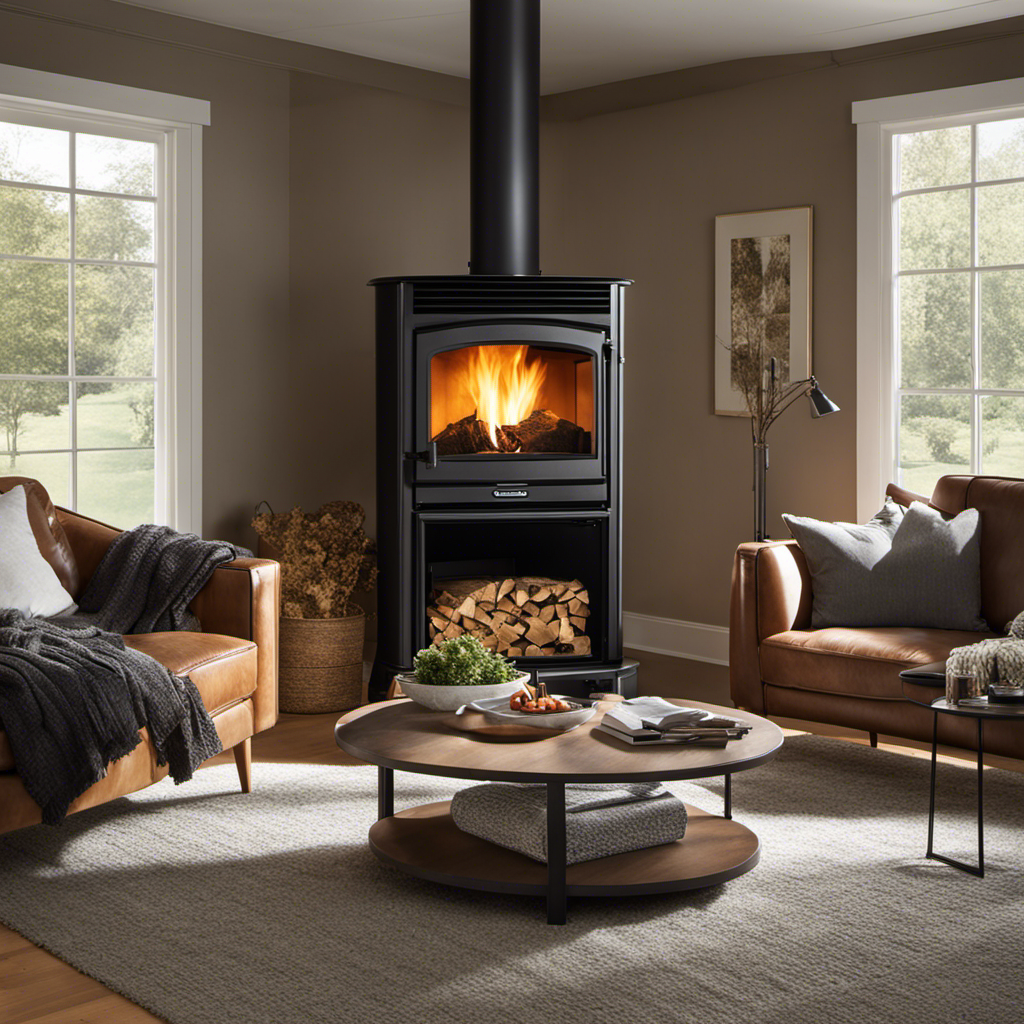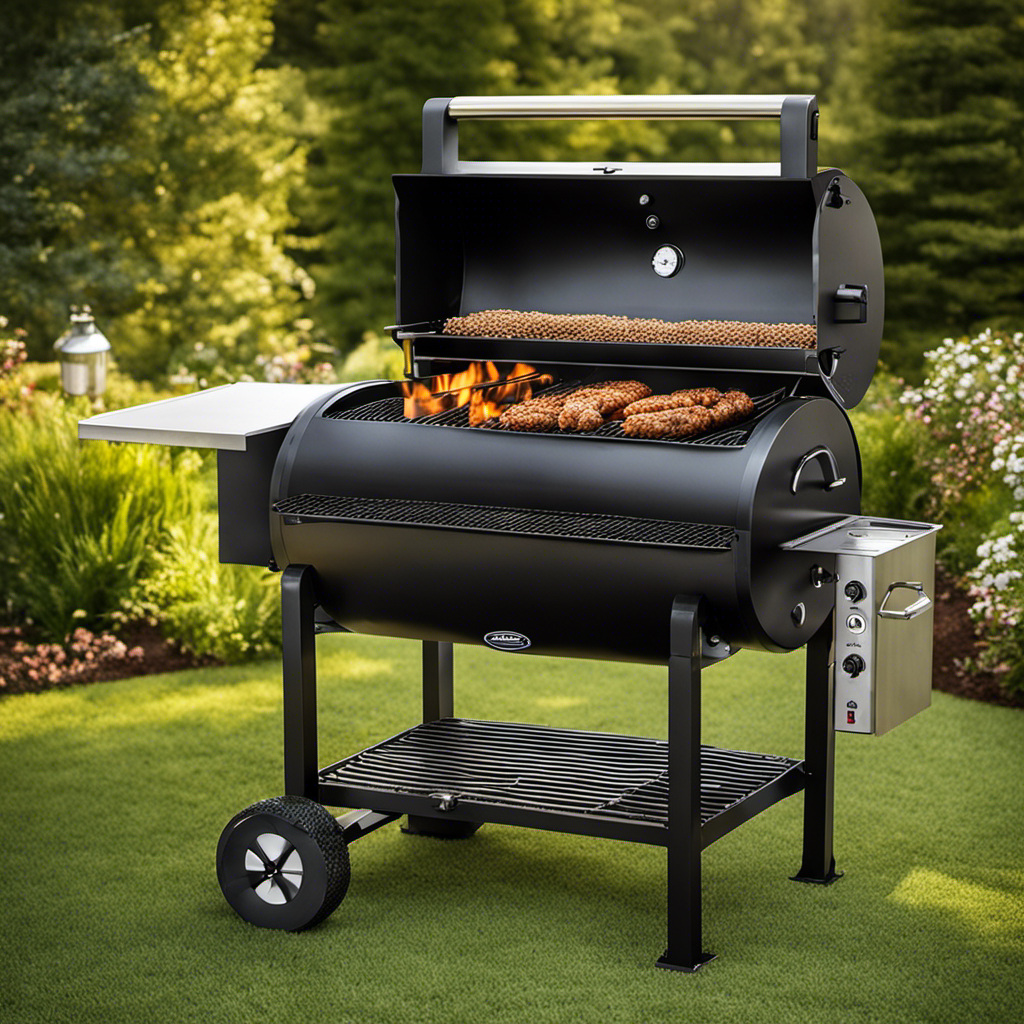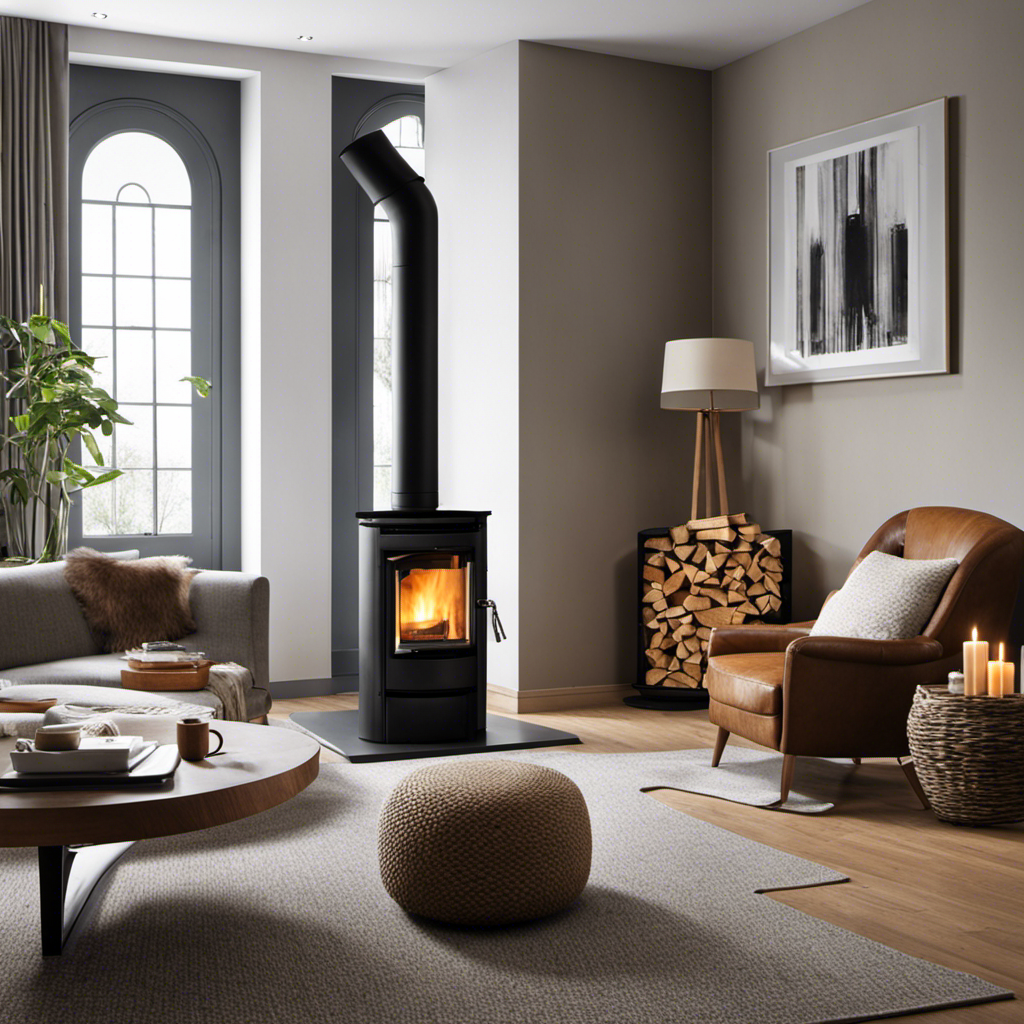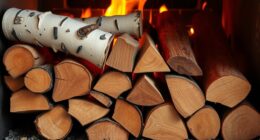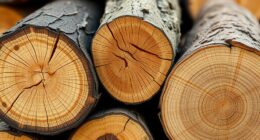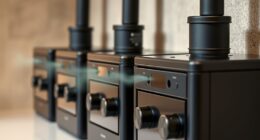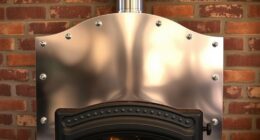With many years of experience working with wood pellet stoves, I can vouch that these marvels of engineering serve as reliable partners, keeping us warm through the chilly nights.
They have a lifespan that can vary depending on several factors, but with proper care and maintenance, they can last for many years.
In this article, we will delve into the factors affecting their lifespan, signs of deterioration, and tips to extend their longevity.
So, let’s embark on this journey to discover just how long wood pellet stoves can truly last.
Key Takeaways
- The average lifespan of wood pellet stoves ranges from 10 to 20 years.
- The quality of pellets used and regular cleaning and maintenance of stove components can affect the lifespan of the stove.
- Signs of a deteriorating wood pellet stove include decreased heat output, strange noises, and excessive smoke or soot buildup.
- Regular maintenance and prompt repairs can extend the lifespan of a wood pellet stove, reducing the need for expensive repairs or replacements.
Factors Affecting Wood Pellet Stove Lifespan
One of the factors that can affect how long wood pellet stoves last is the quality of the pellets used. As an experienced technician in the field, I have encountered common problems that arise when using low-quality pellets. These problems often include poor combustion, increased ash production, and a decrease in overall efficiency.
To troubleshoot these issues, it is recommended to use pellets that have a low moisture content, are made from quality hardwood, and have minimal fines or dust. Additionally, regular cleaning and maintenance of the stove’s components can help prevent common problems and ensure optimal performance.
Average Lifespan of Wood Pellet Stoves
The average lifespan of wood pellet stoves typically ranges from 10 to 20 years. As a seasoned expert in the field, I can confidently say that the longevity of these stoves depends on various factors, including their maintenance and usage.
Wood pellet stoves are designed to be durable and reliable, but like any other appliance, they will eventually deteriorate over time. When a wood pellet stove reaches the end of its lifespan, it may require replacement. The replacement cost can vary depending on the model and features of the stove. It is important to consider the energy efficiency of a wood pellet stove when contemplating a replacement.
Now, let’s delve into the signs of a deteriorating wood pellet stove, which will help you determine if it’s time for a new one.
Signs of a Deteriorating Wood Pellet Stove
If your wood pellet stove is showing signs of deterioration, it’s important to address them promptly. Neglecting maintenance can lead to serious dangers and costly repairs down the line.
As someone experienced in troubleshooting common issues, I can tell you that there are a few key signs to watch out for. Firstly, if you notice a decrease in heat output or inconsistent burning, it could indicate a clogged or dirty vent.
Additionally, strange noises, such as rattling or banging, may be a sign of worn-out or broken components.
Lastly, if you see excessive smoke or soot buildup, it could be a result of poor combustion or a malfunctioning auger.
Extending the Lifespan of Your Wood Pellet Stove
Regular maintenance and prompt repairs can help you extend the lifespan of your wood pellet stove. As someone with experience in the field, I understand the importance of taking care of your appliance to ensure its longevity.
Not only does proper maintenance keep your wood pellet stove running efficiently, but it also reduces the need for expensive repairs or replacements. When considering the environmental impact of heating your home, wood pellet stoves are energy efficient alternatives to traditional heating methods. By using renewable biomass fuel, they release fewer greenhouse gases into the atmosphere.
Now that we understand the significance of extending the lifespan of a wood pellet stove, let’s explore some maintenance tips to help you keep your appliance in optimal condition without any interruption in heating efficiency.
Maintenance Tips for Wood Pellet Stoves
To keep your wood pellet stove running efficiently, it’s important to perform regular maintenance and make prompt repairs.
Maintaining a cleaning routine is crucial in ensuring that your stove operates at its best. Start by cleaning the burn pot and ash pan regularly to prevent ash buildup, which can hinder proper combustion.
Additionally, clean the exhaust vent and inspect the chimney for any blockages or creosote buildup.
Troubleshooting common issues is also part of the maintenance process. If you notice reduced heat output or abnormal noises, check the auger motor, igniter, and combustion blower for any signs of malfunction.
Regularly inspect the gaskets and seals for wear and tear, and replace them if necessary.
By following these maintenance tips, you can extend the lifespan of your wood pellet stove and prevent costly repairs.
However, there may come a time when you need to consider replacing your wood pellet stove.
When to Consider Replacing Your Wood Pellet Stove
As someone who’s worked extensively with wood pellet stoves, I can confidently discuss the signs of wear and when it’s time for an upgrade.
When it comes to signs of wear, keep an eye out for excessive soot buildup, inconsistent heat output, and frequent pellet feeder issues. These could indicate that your stove is nearing the end of its lifespan.
Additionally, if you find yourself constantly needing repairs or if your stove is more than 10 years old, it might be worth considering an upgrade to a newer, more efficient model.
Signs of Wear?
One way to tell if a wood pellet stove is showing signs of wear is if it starts making unusual noises. Common problems that can cause these noises include worn out bearings, loose components, or a malfunctioning fan.
Troubleshooting tips for addressing these issues may involve inspecting the stove for any loose screws or bolts, checking the fan for any obstructions, and lubricating the bearings if necessary. It’s important to address these problems promptly to prevent further damage and ensure the stove continues to operate efficiently.
However, if the stove is consistently experiencing these issues, it may be time for an upgrade to a newer model that is more reliable and efficient.
Time for Upgrade?
When considering whether it’s time to upgrade your wood pellet stove, there are several factors to consider.
First, assess the overall performance and efficiency of your current stove. Are you experiencing any issues with temperature control or inconsistent heating?
Second, evaluate the age and condition of your stove. If it’s approaching the end of its expected lifespan or showing signs of significant wear and tear, it may be worth considering an upgrade.
Finally, compare the cost of upgrading to the potential long-term savings in energy efficiency and maintenance. Newer models often boast improved technology and better fuel consumption, which can result in lower heating costs over time.
Taking these factors into account can help you make an informed decision about upgrading your wood pellet stove.
Here are three key points to consider when exploring your upgrading options and cost comparison:
-
Research different models and brands to find one that suits your heating needs and budget.
-
Consider the potential energy savings and efficiency improvements of a new stove.
-
Compare the upfront cost of a new stove to the potential long-term savings in fuel consumption and maintenance.
What Is the Lifespan of a Wood Pellet Stove Battery?
The Harman XXV wood pellet stove runtime can vary depending on usage and maintenance. On average, the lifespan of a wood pellet stove battery is around 2-5 years. Proper care, such as regular cleaning and ensuring proper ventilation, can help extend the battery’s lifespan.
Frequently Asked Questions
Can I Use Any Type of Wood Pellets in My Wood Pellet Stove?
I’ve found that it’s best to use the type of wood pellets recommended by the manufacturer for my wood pellet stove. This ensures optimal performance and efficiency. Other types may not burn as cleanly or efficiently.
Are There Any Safety Concerns With Using a Wood Pellet Stove?
When using a wood pellet stove, it is important to be aware of potential safety concerns and hazards. Proper installation, regular maintenance, and careful operation can help ensure the safe use of a wood pellet stove.
Can I Use My Wood Pellet Stove as the Primary Source of Heating for My Home?
Yes, I can definitely use my wood pellet stove as the primary source of heating for my home. Not only is it efficient in terms of heating, but it also offers numerous benefits for primary heating.
Can I Install a Wood Pellet Stove Myself, or Do I Need to Hire a Professional?
I can install a wood pellet stove myself, but it’s highly recommended to hire a professional for a safe and efficient installation. DIY installation may lead to improper setup and potential hazards.
How Does the Cost of Operating a Wood Pellet Stove Compare to Other Heating Methods?
Compared to other heating methods, wood pellet stoves offer efficient and sustainable heating. The cost of operating a wood pellet stove is generally lower, thanks to the affordability and availability of wood pellets.
Conclusion
In conclusion, my fellow wood pellet stove enthusiasts, let us marvel at the wondrous contraption that warms our homes and hearts.
Like a faithful companion, our stoves endure the test of time, their average lifespan a testament to their durability. Yet, as with all things, signs of deterioration will inevitably appear.
Fear not, for with proper maintenance and care, we can extend their lifespan and bask in their cozy embrace for years to come.
Remember, my friends, when the time comes to bid farewell to our beloved stove, let us do so with gratitude for the warmth it provided.
Logan’s affair with adventure began in childhood. He hailed from a small town where vast forests bordered one side and endless shores stretched on the other. His days were spent exploring uncharted woods, climbing tall trees, or listening to the tales of old sailors. This early immersion in a world brimming with stories and mysteries became the foundation of his passion for writing.

